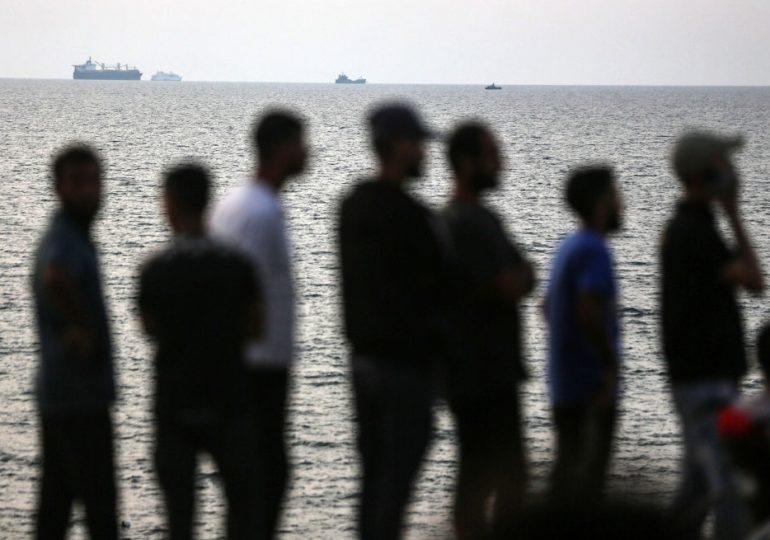Amid intense criticism for his Israel-Gaza approach, President Joe Biden announced earlier this year the construction of a pier to deliver desperately-needed aid to the Strip amid Israel’s ongoing bombardment. But the $230 million pier, which should be re-anchored this week after it broke apart on May 28, has proven to be a hapless operation. It could soon turn disastrous.
[time-brightcove not-tgx=”true”]
The pier has been plagued by issues from the start. Three U.S. ships were grounded on a beach in Gaza following a storm the day it broke apart. Several U.S. military personnel were injured at sea days before that. And the landing area near the pier has been attacked on at least two occasions by Hamas. Aid from the pier has also been looted, with only limited amounts of assistance reaching Gazans from it.
These same problems—and potentially many more—will likely emerge once it’s operational again. The loss of U.S. lives or, even worse, some kind of deeper involvement in the Israel-Hamas war could follow. So if Biden really wants to help end the suffering and best serve U.S. interests, he needs to give up on the pier, move U.S. military personnel and ships away from Gaza, and push Israel to adopt a ceasefire.
Aid delivery via the pier has a lot of moving parts. Aid arrives in Cyprus, is then sent by large commercial ships to a floating platform near Gaza where it is transferred to smaller vessels that transport the aid to the pier. U.S. naval ships offer protection, often very close to Gaza. Israel provides naval and land-based security around the pier, while the U.N. handles aid delivery once on-shore. Officially, no U.S. boots are on the ground in Gaza, but a U.S. counter rocket system is on the pier (likely manned by U.S. personnel). U.S. sailors on the beached vessels last month also spent time onshore in Gaza before being rescued.
The presence of U.S. forces so close to the fighting in Gaza makes them easy targets for Hamas or other militant groups angered by American support for Israel. This danger is compounded by the fact that in protecting the floating platform and pier—which is located in a “high risk” area on the Gaza coast—U.S. personnel are relatively fixed in place. Like the recent Tower 22 attack in Jordan, that makes them attractive targets, according to former U.S. national security officials.
Mission creep is a danger, too. For reasons of domestic politics or hubris, history shows that U.S. presidents have a tendency to double down on humanitarian operations to get them right. The outcomes usually aren’t good. In Somalia, President Bill Clinton expanded a humanitarian mission from food-delivery to regime change in 1993, despite signs of growing danger. The result: Black Hawk Down, which killed 18 U.S. troops. In Lebanon, Ronald Reagan similarly expanded operations in a 1983 peacekeeping mission during that country’s civil war. That ended in the deaths of 241 U.S. military personnel in a bombing at a Marine Corps barracks.
Like Somalia or Lebanon, the Gaza pier could draw the U.S. into a bigger role. As a retired U.S. general recently warned, “If a bomb went off, the American public will ask, ‘What the hell were they doing there in the first place?’”
In short, the costs and risks of the pier outweigh its benefits. The U.S. gains nothing strategically from the pier, and at full operation, it only provides a fraction of the aid Gaza both needs daily and receives from land routes, which are themselves grossly insufficient.
So, what should Biden do now? As a first step, he should give the pier to Israel and get U.S. forces and warships away from Gaza. Israel caused the humanitarian disaster in Gaza, and they should assume the risk. U.S. naval ships could perhaps help secure aid routes to the platform (located two miles offshore). Leave the rest to Israel.
But Washington must also wield its considerable leverage, including weapons sales and diplomatic cover, to apply pressure on Israel to agree to a ceasefire. This is by far the best way to both serve U.S. interests and end the humanitarian crisis. Such pressure will likely require cutting off arms to Israel given its intransigence, as seen by the official Israeli reaction to a new peace proposal last week.
Ultimately, only the war’s end will reduce regional tension that has caused American casualties, endangered U.S. forces, and risks dragging Washington into conflicts of no strategic value. The pier is simply a distraction from that.
Leave a comment








